Signs Your Toddler Is Not Autistic
Recognizing Typical Developmental Milestones in Toddlers

Understanding Your Toddler's Development
In the early years, parents closely monitor their toddler's growth, eager to know if they are meeting expected developmental milestones. Distinguishing between typical behaviors and signs of developmental concerns such as autism spectrum disorder (ASD) is crucial. This article guides readers through common indicators that suggest your toddler is developing typically, providing clarity amid the complexities of early childhood assessment.
Early Social and Communication Milestones of Typically Developing Toddlers
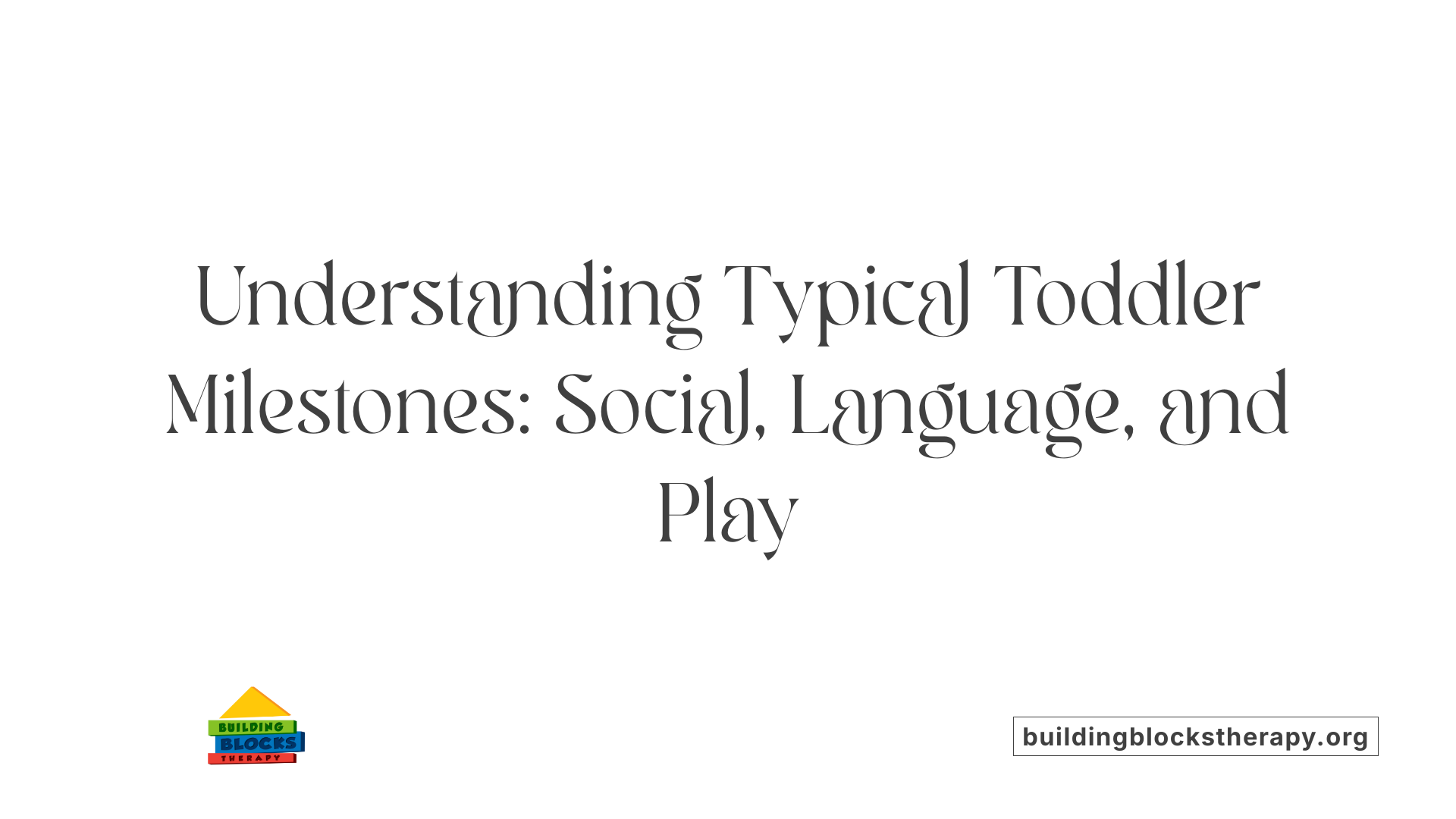
What Are Typical Developmental Milestones Up to 24 Months?
Typically developing toddlers reach several important social, language, and play milestones by the age of 24 months.
Social Behaviors in Toddlers
From birth to two years, toddlers begin to engage with others by smiling, responding when their name is called, and using gestures such as waving or pointing to communicate. These social interactions show their growing awareness of people around them.
Language Development Milestones
In terms of language, toddlers usually start with babbling sounds in infancy and progress to saying meaningful single words between 12 and 18 months. By 24 months, many combine two words into simple phrases, such as "more juice" or "go car," demonstrating early communication skills.
Play Skills Indicating Typical Development
Play behaviors also develop rapidly during this period. By around 18-24 months, toddlers often engage in pretend play and imitate actions they see in adults or older children. This type of play reflects advancing cognitive abilities and social understanding.
These combined observations of social engagement, language, and play provide important markers for assessing normal toddler development within the first two years of life.
Behaviors That Suggest Your Toddler Is Not Autistic
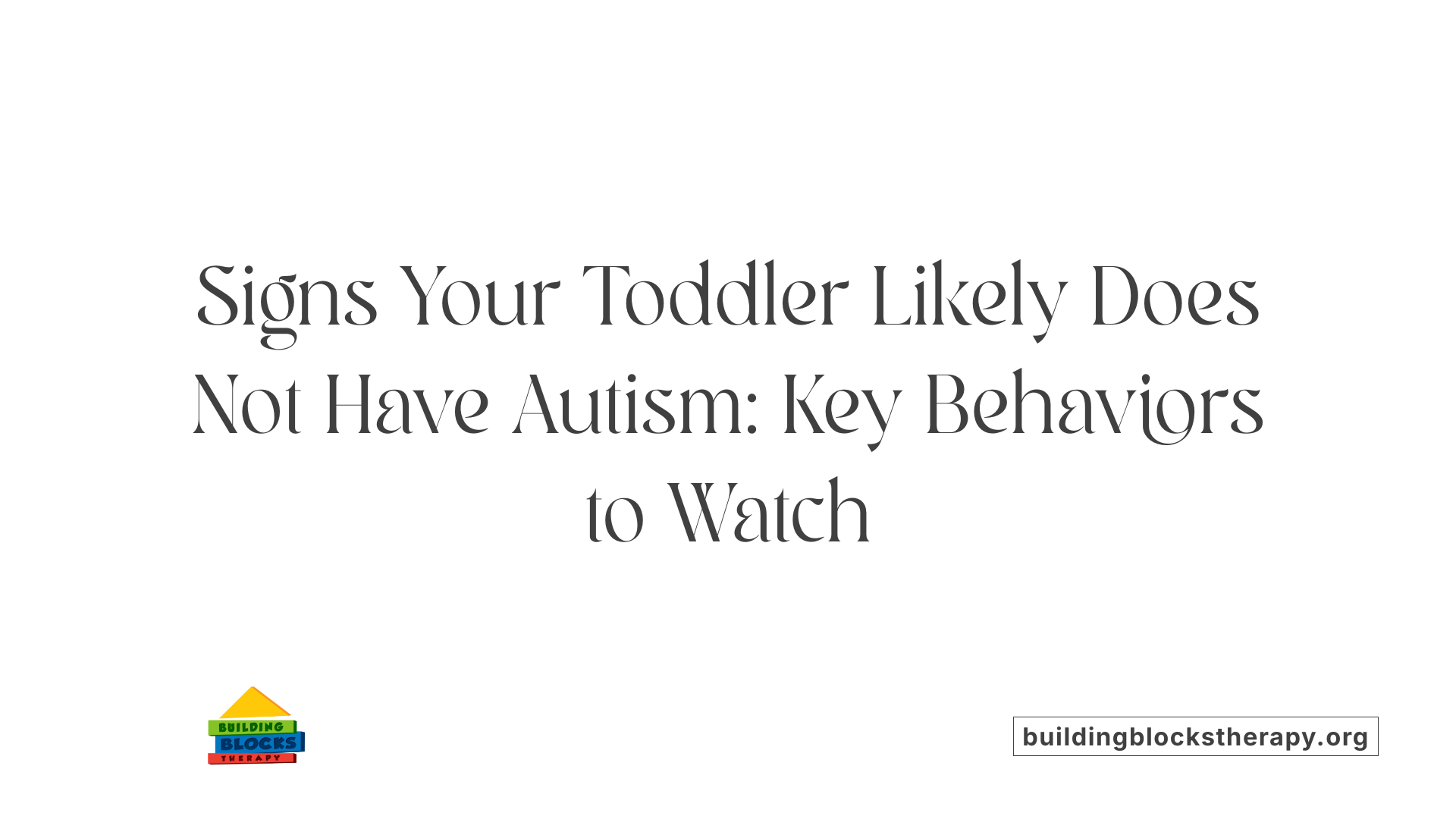
What observable behaviors in toddlers indicate they are likely not autistic?
Toddlers who respond consistently to their name are showing a crucial sign of typical social engagement. Not responding to their name is an early warning sign of Autism Spectrum Disorder (ASD), so a clear response generally suggests typical development.
Eye contact is another important behavior. Toddlers who maintain eye contact, smile frequently, and engage in back-and-forth sharing of sounds or facial expressions demonstrate healthy social communication skills. In contrast, limited or no eye contact is commonly observed in children with ASD.
The use of gestures like pointing, waving, or showing objects by around 12 months is typical for developing toddlers. These gestures are forms of nonverbal communication and indicate social awareness and engagement. Lack of gestures may be an early sign of developmental concerns related to autism.
Social engagement is also reflected by pretend play and imitation. Toddlers who imitate actions and engage in pretend play activities demonstrate an understanding of social interactions and creativity, which are often less evident in children with ASD.
Together, these behaviors—consistent response to name, good eye contact, use of gestures, and active social engagement—suggest that a toddler is not exhibiting typical signs of autism but rather following expected developmental milestones.
Identifying Atypical Behaviors That May Raise Concerns
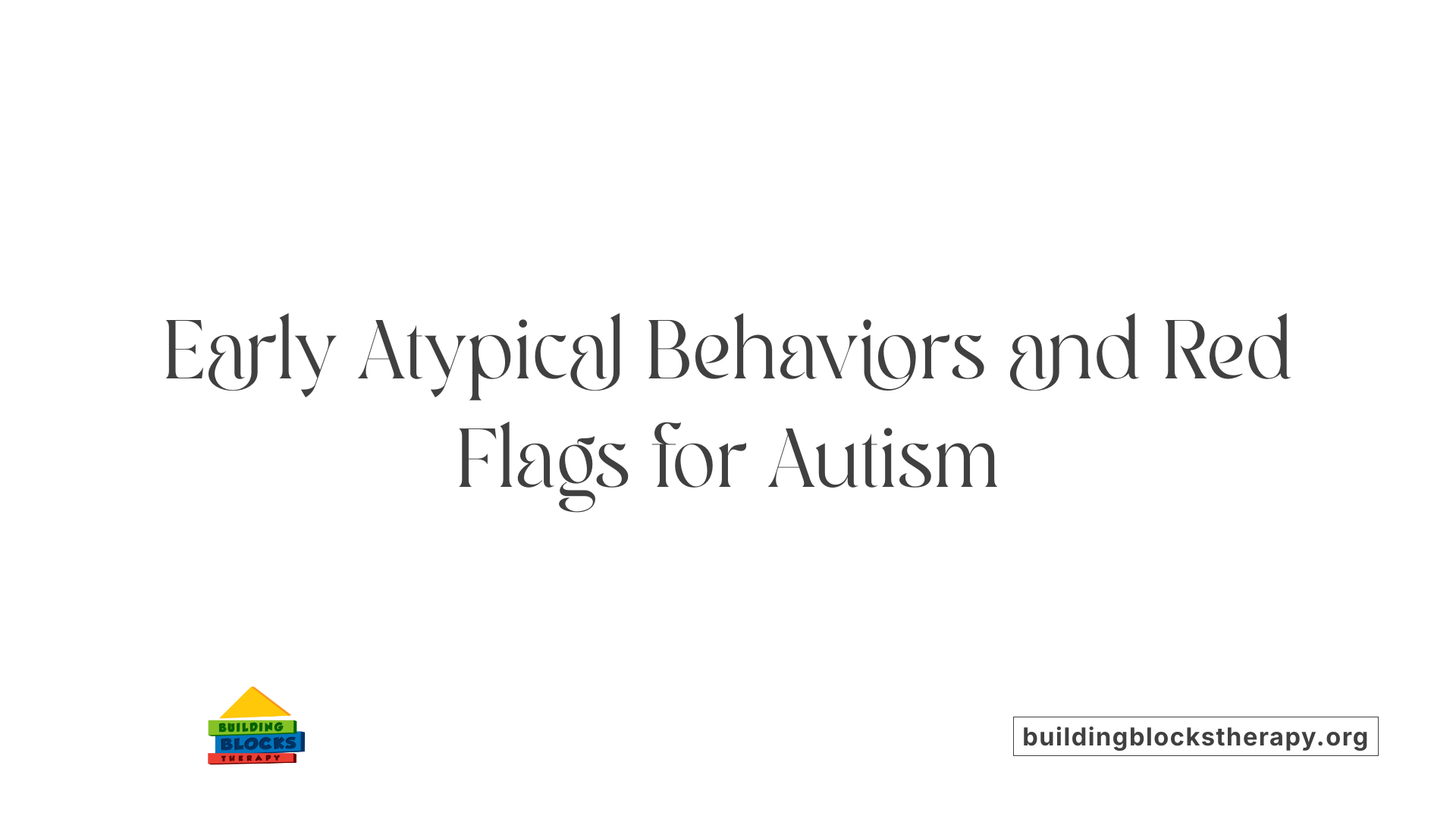
What Early Warning Signs of Autism Are Absent in Typically Developing Toddlers?
Understanding the difference between typical toddler behavior and early signs of Autism Spectrum Disorder (ASD) can help caregivers and professionals identify children who may benefit from further evaluation.
Typically developing toddlers respond to their name consistently and make regular eye contact, which supports social engagement. Gestures such as waving, pointing, or showing objects usually emerge by 12 months and are important milestones. The absence of these gestures can be an early warning sign.
Repetitive movements like hand-flapping, rocking, or lining up toys are behaviors often seen in children with ASD but are not characteristic of typical development. Similarly, a strong intolerance to routine changes — such as distress over minor alterations in daily activities — may indicate atypical behavior needing attention.
Common Atypical Behaviors in Toddlers That Could Signal ASD
- Lack of response to name: Unlike typically developing toddlers, children with ASD may not consistently respond when called.
- Limited eye contact: Reduced or no eye contact during interactions is a red flag.
- Absence of gestures: By 12 months, missing gestures like pointing or waving is concerning.
- Repetitive movements: Behaviors such as hand-flapping or rocking suggest repetitive motor patterns.
- Intolerance to routine changes: Children with ASD may show distress or upset when routines are altered.
Recognizing these behaviors early is essential since early identification leads to timely intervention, which can significantly improve developmental outcomes. Caregivers noticing these signs should consult healthcare providers to initiate appropriate screening and evaluation.
Importance of Early Language and Social Skills as Indicators of Typical Development
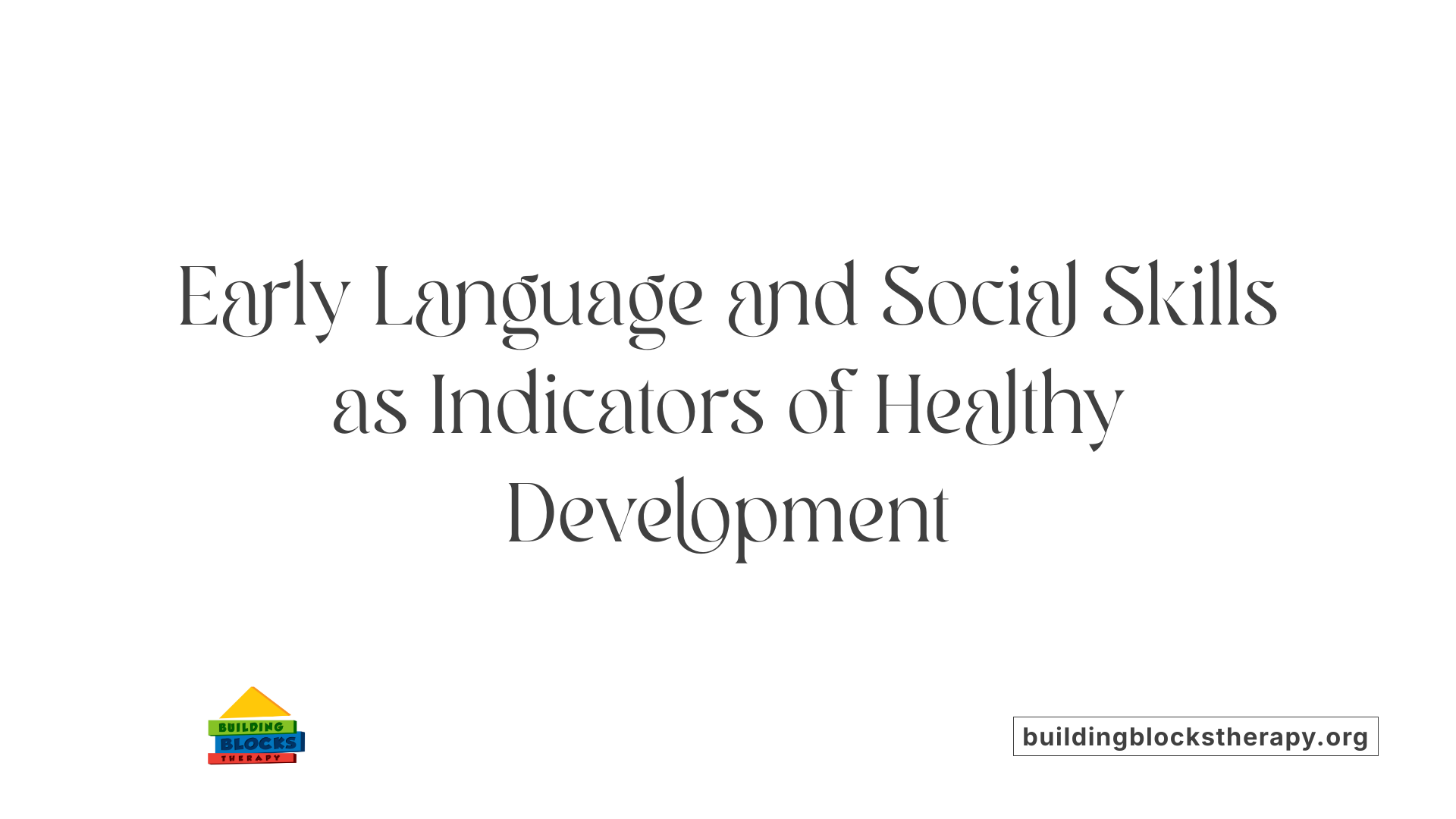
How do language and social milestones indicate non-autistic development?
Early language and social milestones provide a window into a child's typical development. By around 24 months, most children begin to combine meaningful single words into two-word phrases, marking a significant step in language growth. Prior to this, early babbling serves as foundational vocal play that eventually evolves into recognizable words.
Socially, infants usually exhibit behaviors like smiling in response to caregivers and engaging in back-and-forth sharing of sounds or facial expressions. These interactions are important signs of healthy social engagement and connection.
When children reach these milestones — babbling, meaningful word use, combining words, and social smiling or sharing sounds — it generally indicates typical developmental progress rather than autism. In contrast, delays or deficits in these areas can be early warning signals prompting further evaluation.
Observing these language and social behaviors provides caregivers and professionals with valuable insights into a child's developmental trajectory and helps guide early intervention strategies if needed.
Temper Tantrums and Emotional Regulation in Typical Toddlers
When do temper tantrums suggest typical development rather than autism or developmental delay?
Temper tantrums are a common part of toddler development and generally fall within a typical range when they are age-appropriate, relatively infrequent, and tend to decrease as children grow older. These normal tantrums often arise because toddlers are learning to regulate their emotions and communicate their needs or frustrations.
However, parents and caregivers should be attentive when tantrums become severe, frequent, or persist beyond the age of four. Such persistent tantrums, especially if they occur alongside other atypical behaviors such as difficulties with social engagement, repetitive movements, or extreme sensory sensitivities, may indicate underlying developmental issues like Autism Spectrum Disorder (ASD).
In typically developing children, emotional regulation is a gradual learning process where tantrums gradually lessen as language, social, and coping skills improve. In contrast, children with developmental concerns might show persistent emotional outbursts that are disproportionate to the situation or difficult to soothe.
Signs when tantrums may indicate developmental issues
- Severe temper tantrums that continue past the toddler years (after age 4).
- Tantrums accompanied by poor eye contact, limited social responsiveness, or unusual sensory reactions.
- Behavior patterns involving repetitive movements or restricted interests.
- Difficulty adapting to changes in routine or intense emotional reactions beyond typical frustration.
Early recognition of these signs helps in timely evaluation and intervention, supporting better emotional and behavioral outcomes for children who may have developmental delays or disorders.
Variability in Autism Presentation and the Importance of Cultural Competence
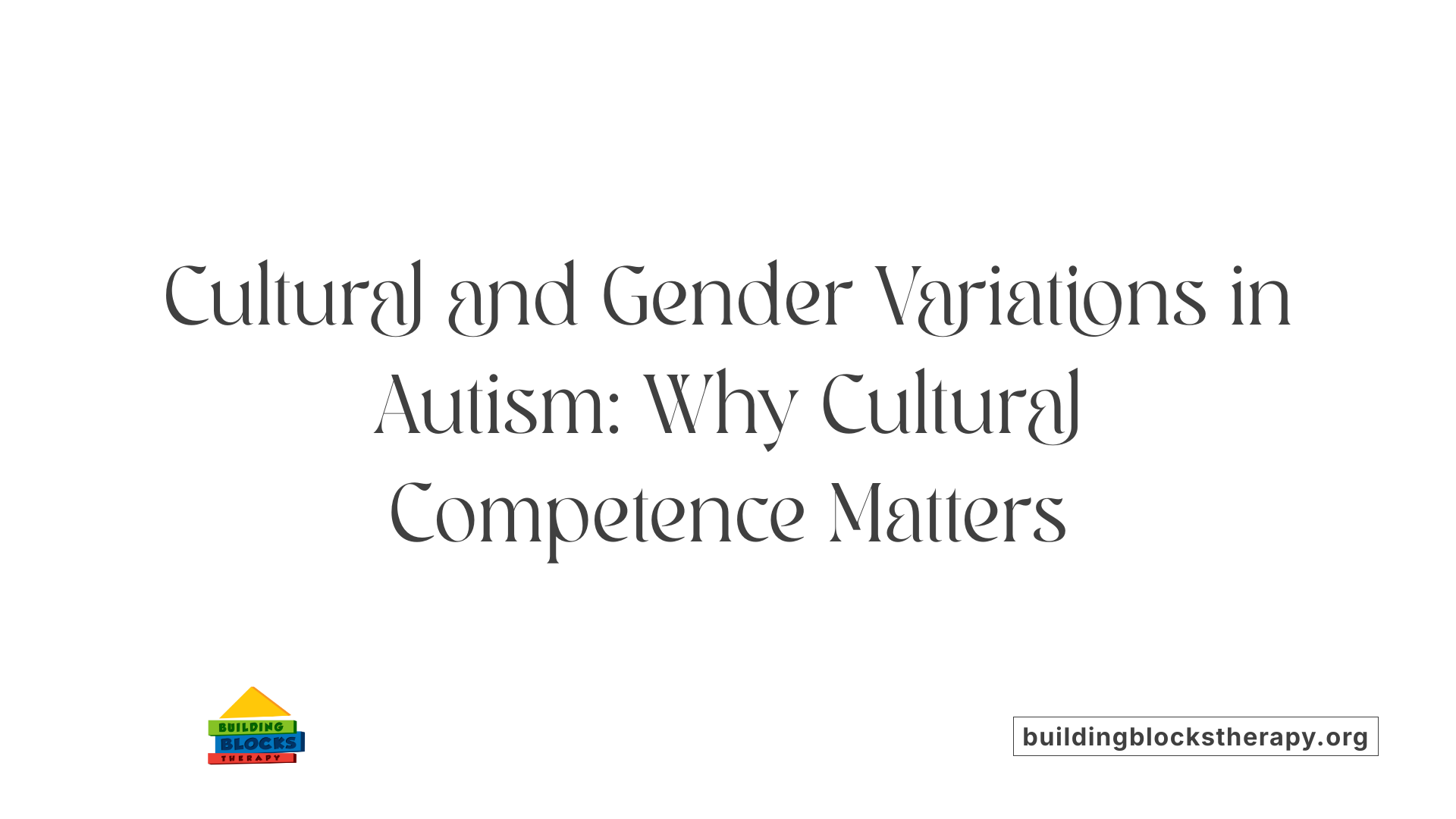
How can autism present differently and why is cultural competence important in development assessment?
Autism Spectrum Disorder (ASD) often manifests differently between boys and girls. Girls with autism typically show more internalizing behaviors, which means they might be quieter, more withdrawn, or more anxious compared to boys. They also tend to have better surface-level social skills, like polite conversation or imitation of social norms, which can mask their challenges and lead to later or missed diagnosis.
Understanding these differences is crucial because girls might not display the more noticeable repetitive or disruptive behaviors often associated with autism in boys. This variability necessitates a nuanced approach to recognizing early signs and ensuring timely intervention.
Cultural competence plays a vital role in the assessment of child development and autism diagnosis. Different cultures have unique child-rearing practices, communication styles, and social expectations that influence children's behavior.
Without cultural competence, clinicians might misinterpret culturally typical behaviors as developmental delays or autistic traits, or conversely, overlook genuine signs of ASD by attributing them to cultural norms. Therefore, appreciating and respecting cultural diversity ensures accurate assessments and avoids potential biases.
By combining awareness of gender differences in autism presentation with culturally informed evaluation, professionals can better identify children who need support, facilitating early intervention that can significantly improve outcomes.
Applied Behavior Analysis (ABA) Therapy: Overview and Its Role in Autism Intervention
What is applied behavior analysis (ABA) therapy and how does it help individuals with autism?
Applied Behavior Analysis (ABA) therapy is a scientifically validated method that applies principles of learning and behavior to support skill development in individuals with Autism Spectrum Disorder (ASD).
ABA focuses on teaching new skills and reducing challenging behaviors using strategies like positive reinforcement. Therapists design personalized interventions that encourage communication, social engagement, and daily living skills.
How does ABA support skill development in autism?
ABA therapy breaks down complex skills into manageable steps, offering consistent practice and feedback. This structured approach helps children with autism learn language, social interaction, and adaptive behaviors efficiently.
For example, ABA techniques can teach children to respond to their name, use gestures, and engage in appropriate play—skills often delayed in children with ASD. It also addresses repetitive or restrictive behaviors by promoting flexibility and alternative coping strategies.
Why is early intervention important?
Research shows that starting ABA therapy early—ideally by the age of two when autism can be reliably diagnosed—leads to better outcomes. Early intervention capitalizes on the brain’s plasticity during crucial developmental windows, enhancing communication, social skills, and independence.
The American Academy of Pediatrics recommends regular screening for ASD at 18 and 24 months to identify children who could benefit from ABA and other therapies. Early recognition and support improve the child’s quality of life and family well-being.
Providers and Delivery of ABA Therapy for Children with Autism
Who typically provides ABA therapy for individuals with autism?
ABA therapy is delivered by trained and credentialed professionals, primarily board-certified behavior analysts (BCBAs) and assistant behavior analysts (BCaBAs). These specialists design and oversee individualized treatment plans based on each child's unique needs and developmental profile.
Settings where ABA therapy is provided
ABA therapy can be conducted in a variety of environments to best support the child's learning and comfort. Common settings include specialized clinics, the child's home, and educational settings such as schools. This flexibility allows therapy to be integrated into daily routines and social contexts.
Supervision and safety standards
Qualified supervision is essential to maintaining the effectiveness and safety of ABA interventions. BCBAs continuously monitor and adjust therapy programs to ensure positive, non-aversive methods. All therapy follows ethical standards that prioritize the child's well-being, encouraging skill acquisition and independence while minimizing any distress.
Together, these components ensure that ABA therapy is delivered in a professional, supportive, and safe manner aimed at improving language, social, and behavioral skills in children with autism.
Key ABA Techniques Utilized in Autism Therapy
What are the key techniques used in ABA therapy for autism?
Applied Behavior Analysis (ABA) therapy uses several important techniques to support learning and behavior improvement in children with autism. One foundational method is positive reinforcement. This involves rewarding desired behaviors to increase the chance they will happen again, helping children learn new skills effectively.
Another central approach is prompting and fading. Therapists use prompts—such as verbal cues or gestures—to assist the child in performing a task, then gradually reduce these prompts, promoting independence.
Shaping is also used, where successive approximations of a target behavior are reinforced. This encourages the child to improve step-by-step toward a goal.
Behavior chaining breaks down complex behaviors into smaller steps taught in sequence, enabling mastery of multi-step tasks.
Additionally, discrete trial training (DTT) offers structured, one-on-one teaching moments with clear instructions and immediate feedback. This method helps children focus and learn in manageable increments.
Together, these techniques allow therapists to adapt instruction to each child's needs, fostering skill acquisition in communication, social interaction, and daily living. Complementary strategies often used include modeling behaviors and teaching functional communication to replace challenging behaviors.
By combining these methods, ABA therapy provides a comprehensive, evidence-based framework that supports positive outcomes for children with autism.
Measuring ABA Therapy Effectiveness and Addressing Its Limitations
How is the effectiveness of ABA therapy measured?
ABA therapy effectiveness hinges on meticulous, data-driven progress monitoring. Therapists regularly collect data on a child's advancement toward established goals across key areas such as language, social skills, and academics. This often involves standardized assessments administered every six months to objectively evaluate improvements. The therapy's duration and intensity are crucial factors; longer and more intensive programs tend to yield better outcomes. To enhance this process, modern digital tools allow real-time tracking and analysis of behavioral data, enabling therapists to promptly adjust interventions for optimal results tailored to each child's needs.
Are there any criticisms or limitations of applied behavior analysis therapy for autism?
Despite a robust evidence base supporting ABA, it has faced significant critiques. Early ABA approaches emphasized conformity and compliance, occasionally employing aversive methods that raised concerns about causing emotional distress, especially when suppressing natural repetitive behaviors or "stimming." Critics highlight the importance of respecting neurodiversity and advocate for ethical models that prioritize the child's well-being and individuality. In response, contemporary ABA practices focus on naturalistic and individualized techniques that promote independence while minimizing distress. This evolution aims to balance effective skill acquisition with compassionate care, honoring each child's unique experience.
Reassuring Signs Your Toddler Is Developing Typically
By observing key social, communicative, and play milestones such as consistent response to name, eye contact, use of gestures, and appropriate language progression, parents can feel confident that their toddler is on a typical developmental path. While early detection of autism is vital when concerns arise, the absence of hallmark autism signs coupled with age-appropriate behavior and emotional regulation typically indicates healthy development. For children with developmental delays or autism diagnoses, evidence-based interventions like ABA therapy delivered by qualified professionals offer promising pathways to skill acquisition and independence. Vigilant observation combined with knowledgeable guidance empowers caregivers to support their child's thriving growth with confidence and care.
References
- Early Warning Signs of Autism Spectrum Disorder
- Signs of autism
- Understanding the Early Signs & Symptoms of Autism
- What to Consider When Looking for a Qualified ABA Provider
- Qualifications of Behavior Service Providers
- Applied Behavior Analysis (ABA)
- Applied Behavior Analysis (ABA)
- The Top 10 Reasons Children With Autism Deserve ABA
- 6 Benefits of ABA Therapy for Children with Autism
- The effectiveness of applied behavior analysis program ...






